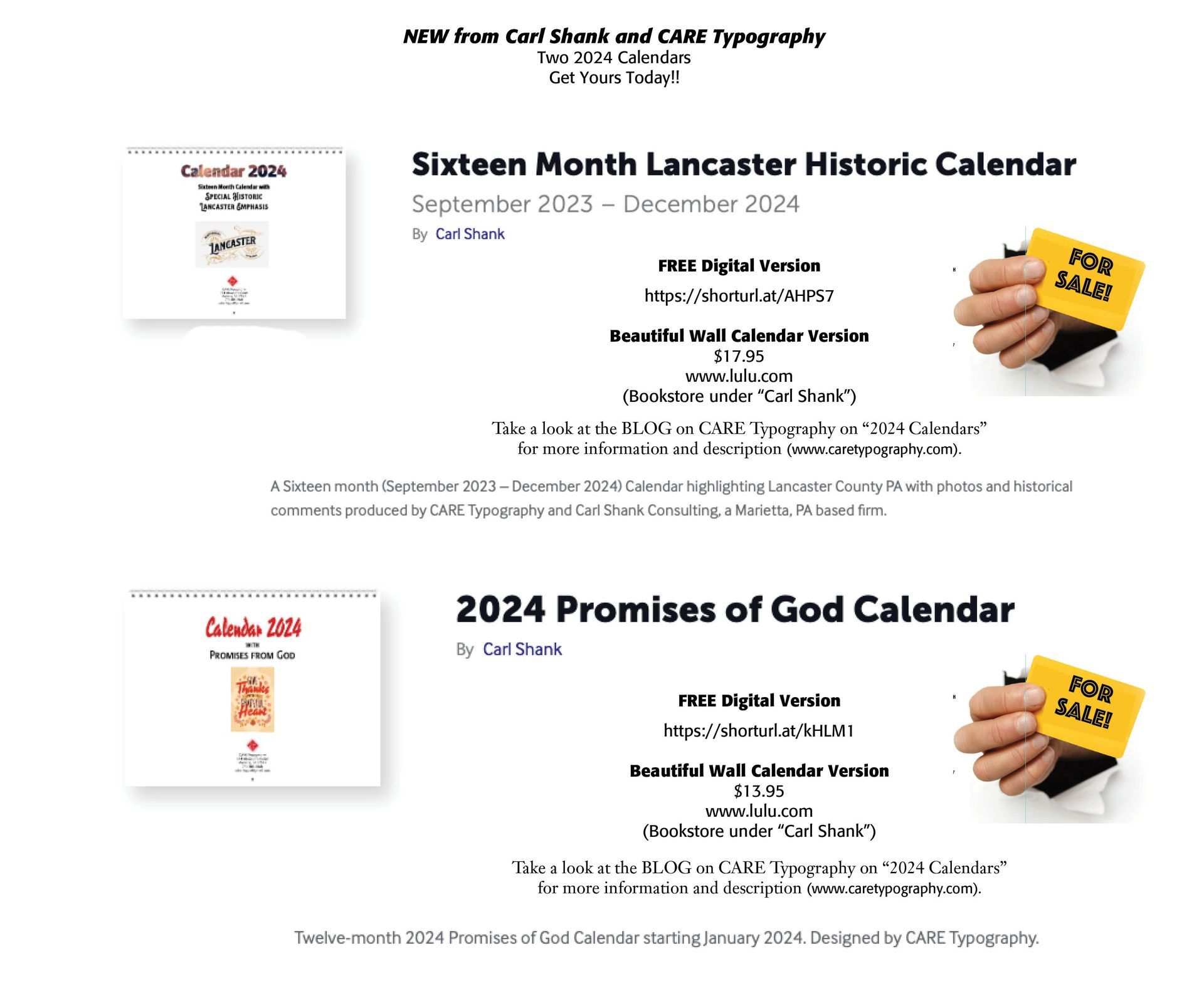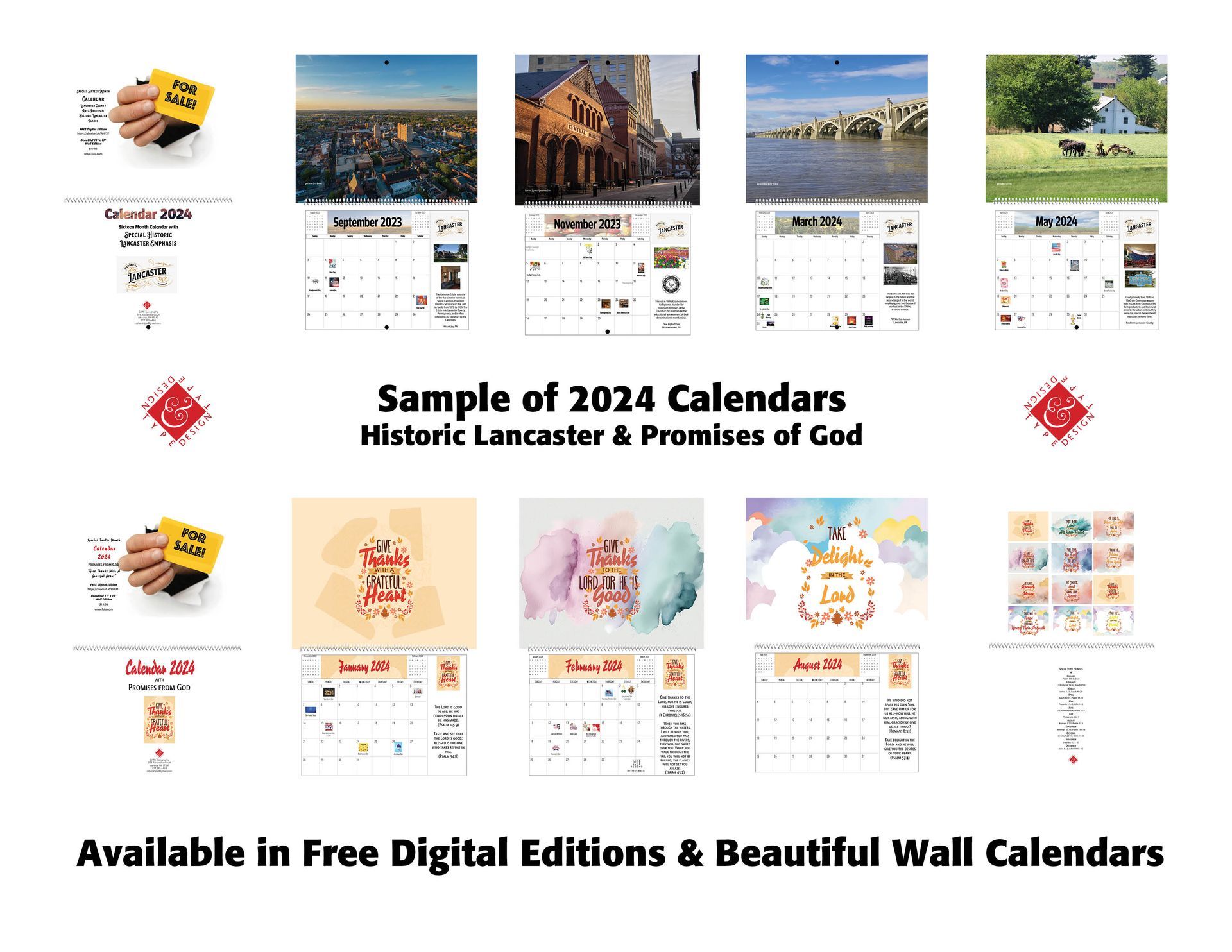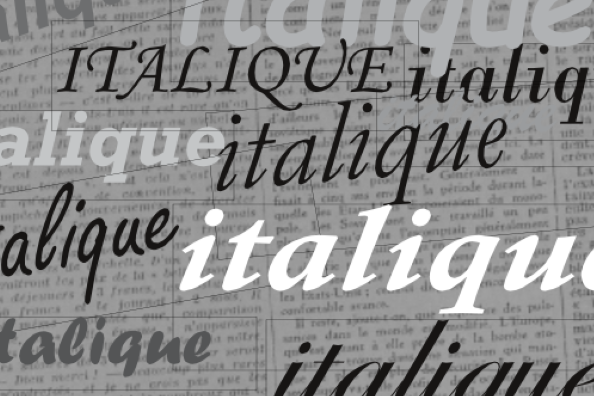Calendars for 2024
Calendars for 2024. Everyone needs a calendar, and CARE Typography has produced two new 2024 Calendars. Each Calendar has the recognized national holidays cited with a graphic. They are both available in a FREE digital edition AND a beautiful color printed wall calendar edition.
The 2023-2024 Historic Lancaster Calendar is a sixteen-month Calendar with a modern photo supplied by area photographers and historic places noted on the side of the calendar days. This is a Calendar for Lancaster County, PA history buffs as well as those interested in Lancaster County places and sights.
The 2024 Promises of God Calendar is a twelve-month 2024 Calendar with specific verses from Scripture citing the promises of God for Christians. The large graphics have been designed using Kittl templates. Each month is a reminder of God's gracious promises to his people. It is also available as a FREE digital calendar as well as a beautiful color printed wall calendar.
The printed color wall calendar editions can be purchased from the Bookstore at www.lulu.com under the name "Carl Shank." Prices are given in the Ad below.
We invite you to purchase both for your home or office!


Successful Layout & Design



